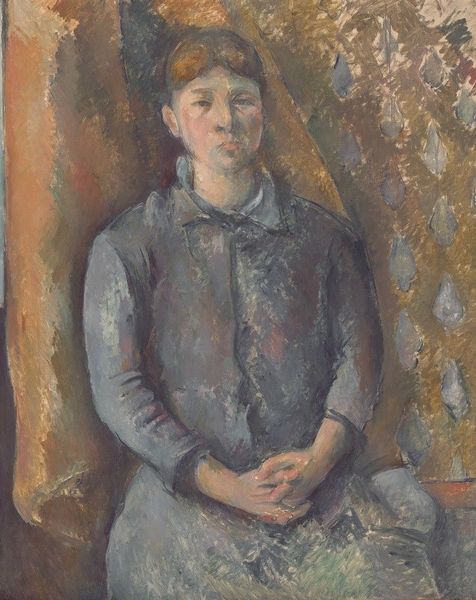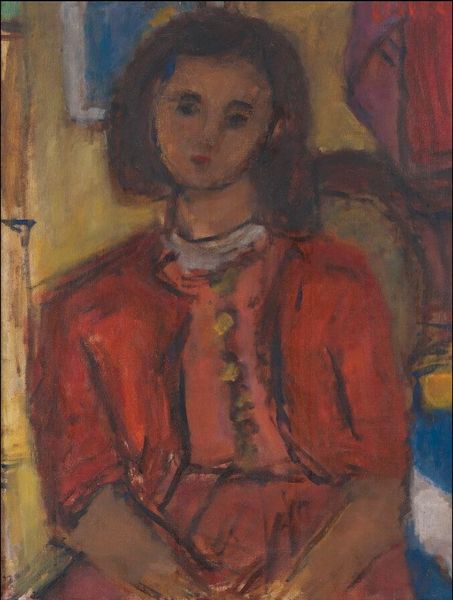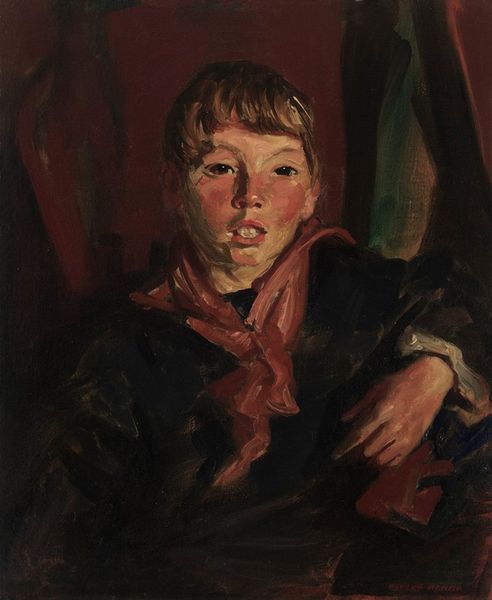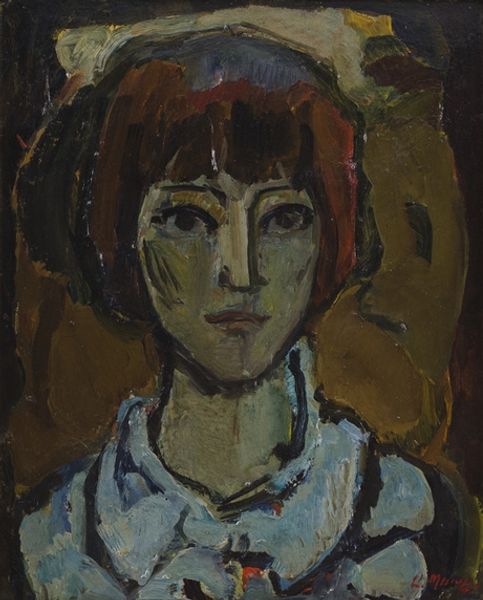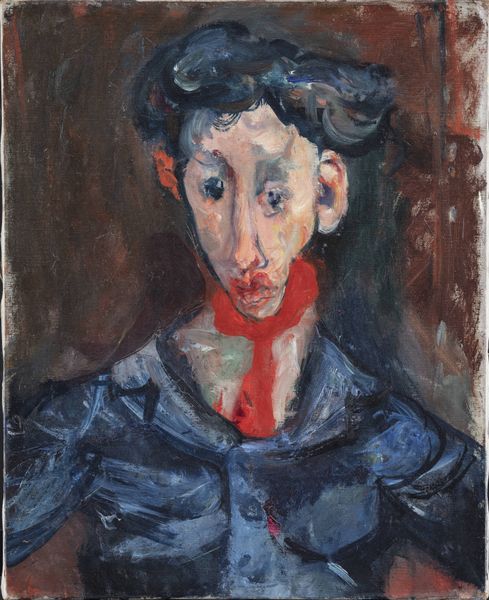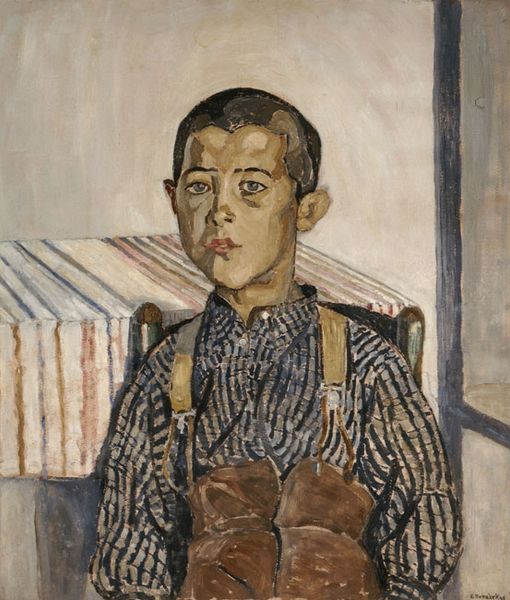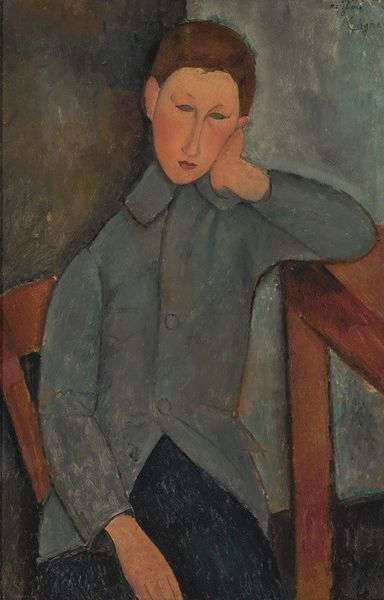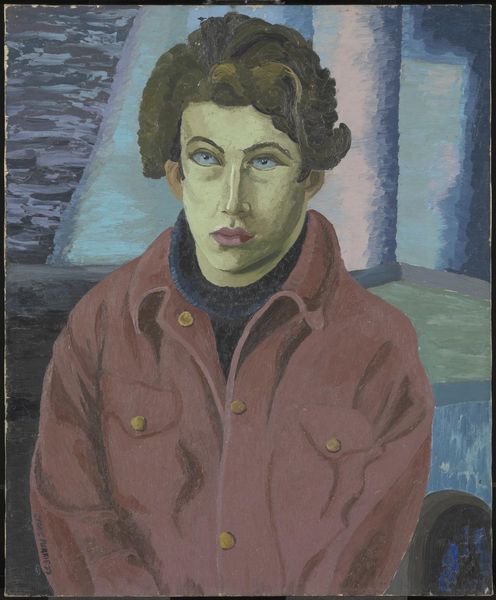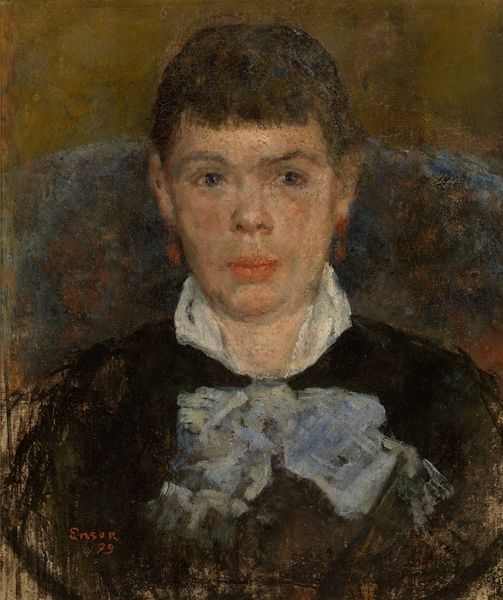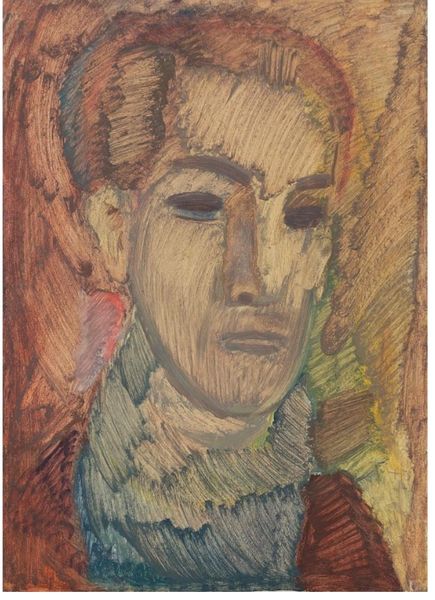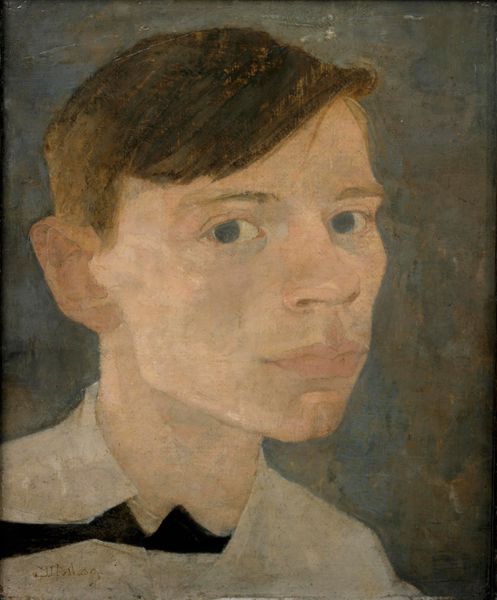
painting, oil-paint
#
portrait
#
painting
#
oil-paint
#
oil painting
#
expressionism
#
modernism
#
realism
Dimensions: 73.66 x 63.5 cm
Copyright: Public domain
Curator: This is Arshile Gorky's 1926 oil painting, "Portrait of Azadoohi (Liberty Miller)." Editor: The colors are surprisingly muted, almost melancholy, for a portrait. There’s a real weight in the sitter's expression that catches my attention. Curator: Gorky painted this early in his career, during a period of experimentation with modernist styles and traditional portraiture. He deeply admired Cézanne at this stage, and that influence comes through here, doesn't it? The fractured planes and emphasis on structure beneath the surface. Editor: Absolutely, it reads Cézanne, filtered through a certain immigrant sensibility, maybe? I see a quiet stoicism, which resonates deeply. Look at the somber red of the coat, almost like a shield, set against that ambiguous, muted background. Red traditionally speaks of energy, vitality, but here... it feels suppressed. Curator: Interesting observation. Azadoohi was Gorky's sister, and like him, a survivor of the Armenian genocide. Understanding that historical context infuses this image with a whole other layer. That “weight” you noticed might well be the weight of generational trauma, right? Editor: Precisely. And thinking about symbolism, her direct gaze, not quite challenging, but certainly unwavering... It hints at resilience, a refusal to be broken. Also, notice how the chair almost disappears into the background, leaving only the sitter present; a human, lasting beyond any set and surrounding. Curator: It brings up ideas around displacement, doesn’t it? The way identity persists despite a loss of place, loss of home, and maybe even a deliberate fracturing of representation. The portrait then transforms into more than a mere likeness; it becomes a powerful assertion of existence. Editor: Yes! In its muted tones and perceived melancholy, it carries profound echoes of survival and unspoken stories. There is some haunting humanity here, wouldn't you agree? Curator: A sobering yet essential point, given the historical context, I think. Editor: Indeed. Seeing through symbols gives new appreciation, to see how the old echoes and is transformed to reveal more to new and existing memories.
Comments
No comments
Be the first to comment and join the conversation on the ultimate creative platform.
